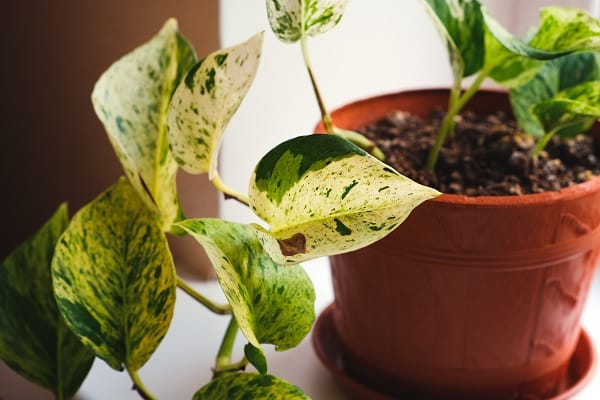Houseplants have gained tremendous popularity over the years, transforming urban living spaces into green oases. Apart from improving the aesthetics of your home, they play a vital role in enhancing air quality and promoting a sense of tranquility. But like all living organisms, houseplants can also fall prey to various diseases. Identifying and addressing these diseases promptly can make a difference between a vibrant, thriving plant and a wilting, dying one. In this article, you will explore some of the most common diseases that afflict houseplants and how to prevent or manage them effectively.
Contents
Uncovering Plant Diseases
Houseplants can succumb to various types of diseases, ranging from fungal and bacterial infections to those caused by pests or nutrient deficiencies. These diseases can interfere with the plant’s natural growth process and eventually lead to its demise. Understanding the causes and signs of these diseases can help plant owners respond swiftly and effectively, mitigating the damage and helping their plants recover.
Houseplants might be more susceptible to certain diseases due to the indoor environment they inhabit. Factors such as inadequate lighting, overwatering, poor air circulation, or incorrect temperature can create conditions conducive to the spread of disease. By creating an optimal environment for your plants and monitoring them regularly for signs of distress, you can prevent many common plant diseases from taking hold. In the following sections, you will explore some of the most common houseplant diseases and how to manage them.
Fungal Diseases
Fungal diseases are among the most common illnesses that houseplants can encounter. They thrive in moist, humid conditions, making overwatered houseplants particularly vulnerable. The presence of fungi can lead to leaf discoloration, wilting, and in severe cases, plant death. However, with careful observation and prompt action, fungal diseases can be managed effectively.
Powdery Mildew, for example, manifests as a white or gray powdery substance on the leaves and stems of the plant. To prevent this, ensure your plants are not overcrowded, and water them from below to keep the leaves dry. Root Rot, another common fungal disease, causes the plant roots to turn brown and mushy. Prevention involves avoiding overwatering and ensuring good drainage. In case of an infection, you should remove the infected parts and repot the plant in fresh, sterile soil.
Bacterial Diseases
Bacterial diseases, although less common than fungal ones, can have devastating effects on houseplants. Bacteria usually enter the plant through wounds or openings caused by pruning or pest damage, resulting in a variety of symptoms depending on the type of bacteria involved. Bacterial Leaf Spot, characterized by dark, water-soaked spots on leaves, can lead to leaf drop and stunted growth. To prevent this disease, avoid water splashes on leaves and ensure good air circulation around your plants.
Crown Gall is another bacterial disease that causes abnormal growths or ‘galls’ at the plant base or on roots and stems. Maintaining sanitary conditions when handling plants, particularly during pruning or repotting, can help prevent this disease. If a plant gets infected, it’s crucial to remove and dispose of the affected parts properly, and in severe cases, the entire plant may need to be discarded to prevent the bacteria from spreading.
Viral Diseases
Viral diseases, although less common in houseplants compared to fungal or bacterial diseases, can cause significant damage if left unchecked. Viruses are microscopic entities that invade the cells of the plant and interfere with its normal functions. The outcome can be varying degrees of stunted growth, leaf discoloration, or even plant death. Cucumber Mosaic Virus (CMV), for instance, affects a wide range of plants, causing a mottled or mosaic pattern on the leaves.
Since there’s no cure for viral diseases, prevention is key. Regularly inspect your plants for any signs of disease, isolate any sick plants to prevent the virus from spreading, and always clean your tools after use. Orchid Fleck Virus is another common virus that affects houseplants, especially orchids. It presents as white or yellow spots on the leaves. To prevent it, ensure good hygiene when handling your plants and avoid using tobacco products around them, as tobacco can carry the virus.
Pest-Related Diseases
Pest-related diseases are another significant concern for houseplant owners. Insects and other pests can cause physical damage to the plant, create openings for diseases to enter, or even introduce diseases themselves. Regular inspections of your houseplants for signs of pest activity can catch infestations early and keep your plants healthy. Spider mites, for example, are tiny pests that can cause discoloration and stippling on leaves. They’re best prevented by maintaining proper humidity levels, as they thrive in dry conditions.
If an infestation does occur, natural remedies like neem oil or a strong spray of water can dislodge the mites. Another pest to be aware of is aphids, as they can cause leaves to turn yellow and curl. Regularly washing your plants with mild soapy water can deter aphids, and infestations can be managed with insecticidal soap or neem oil.
Environmental Stress Diseases
Environmental stress diseases are a result of the plant’s environment being unsuitable for its growth and health. Factors like lighting, temperature, and humidity all play significant roles in plant health. If these are not optimal, the plant can experience stress, leading to symptoms such as wilting, leaf drop, and stunted growth. One example of this is leaf scorch which results from excessive light or heat, causing the edges of leaves to turn brown and crispy.
To prevent it, ensure your plant is receiving the appropriate amount of light and isn’t exposed to extreme temperature changes. Chlorosis, on the other hand, is a condition characterized by yellowing leaves due to insufficient light. To prevent chlorosis, ensure your plants receive enough light for their specific needs, and remember that some plants may require supplemental light, especially in winter.
Nutrient Deficiency Diseases
Just like humans, plants require certain nutrients to thrive. When a plant lacks any of these necessary nutrients, it can exhibit a range of symptoms that can often be mistaken for disease. It’s, therefore, crucial to understand your plant’s specific nutritional needs and ensure they are being met.
Nitrogen Deficiency, for example, can cause the plant’s lower leaves to turn yellow and its growth to be stunted. You can prevent this by using a balanced fertilizer that includes nitrogen. Conversely, magnesium deficiency can cause the leaf margins to curl and turn yellow or red. This can be prevented by applying a magnesium-containing fertilizer or adding Epsom salts to your regular watering routine.
Proper Care For Disease Prevention
Regular monitoring and early detection are some of the most effective strategies for managing plant diseases. By examining your plants regularly, you’ll be more likely to notice the early signs of disease or infestation, which can often be addressed before the plant’s health is severely affected. Look for any changes in leaf color, shape, or growth pattern, and respond promptly if you notice anything unusual.
Proper watering, lighting, and temperature conditions are also crucial to keeping your plants healthy. Overwatering is a common cause of many plant diseases, so ensure you water your plants according to their specific needs. Likewise, every plant species has its own light and temperature preferences, so do your research and adjust your care routine accordingly. Proper fertilization and soil management can also go a long way in preventing nutrient deficiency diseases.
Stay Vigilant In the Fight Against Common Diseases In Houseplants!
In the journey of houseplant ownership, understanding and managing common diseases is vital. As you’ve explored, diseases can stem from various sources, such as fungi, bacteria, viruses, pests, environmental stress, and nutrient deficiencies. By closely observing your plants, offering the proper care, and taking timely action, you can ensure your indoor green companions thrive and flourish. Ultimately, being an informed and responsive plant owner not only keeps your plants healthy but also enhances your connection with these vibrant life forms!







